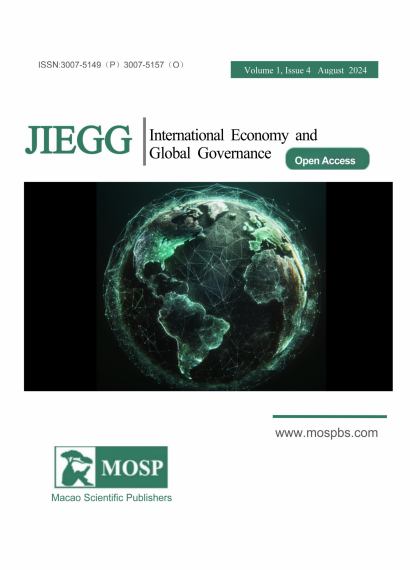-
Nieborg, D. B., & Helmond, A. (2019). The political economy of Facebook’s platformization in the mobile ecosystem: Facebook Messenger as a platform instance. Media, Culture & Society, 41(2), 196–218.
-
Hansler, J. D., Jennifer. (2020, July 7). The United States is “looking at” banning TikTok and other Chinese social media apps, Pompeo says | CNN Business. CNN. https://www.cnn.com/2020/07/07/tech/us-tiktok-ban/index.html
-
United Nations. (1949). Universal declaration of human rights (Vol. 3381). Department of State, United States of America.
-
Jain, A. K., Sahoo, S. R., & Kaubiyal, J. (2021). Online social networks security and privacy: Comprehensive review and analysis. Complex & Intelligent Systems, 7(5), 2157–2177.
-
Jiang, Y. (2012). Cyber-nationalism in China: Challenging Western media portrayals of internet censorship in China. Univ. of Adelaide Press.
-
Yang, F., & Xu, J. (2018). Privacy concerns in China’s smart city campaign: The deficit of China’s Cybersecurity Law. Asia & the Pacific Policy Studies, 5(3), 533–543.
-
Aminah, S. (2021). The public rights to the sidewalk in a smart city framework: The case study of Surabaya. Masyarakat, Kebudayaan Dan Politik, 34(2), Article 2.
-
Hernandez-Ramos, J. L., Martinez, J. A., Savarino, V., Angelini, M., Napolitano, V., Skarmeta, A. F., & Baldini, G. (2021). Security and Privacy in Internet of Things-Enabled Smart Cities: Challenges and Future Directions. IEEE Security & Privacy, 19(1), 12–23.
-
Van Twist, A., Ruijer, E., & Meijer, A. (2023). Smart cities & citizen discontent: A systematic review of the literature. Government Information Quarterly, 40(2), 101799.
-
Jacobsen, K. L., & Sandvik, K. B. (2018). UNHCR and the pursuit of international protection: Accountability through technology? Third World Quarterly, 39(8), 1508–1524.
-
Taylor, L. (2016). No place to hide? The ethics and analytics of tracking mobility using mobile phone data. Environment and Planning D: Society and Space, 34(2), 319–336.
-
Knuth, R. (1999). Sovereignty, Globalism, and Information Flow in Complex Emergencies. The Information Society, 15(1), 11–19.
-
Cozzens, S., & Thakur, D. (2014). Problem and concepts. In Innovation and Inequality (pp. 3–22). Edward Elgar Publishing.
-
Land, M. K., & Aronson, J. D. (2020). Human Rights and Technology: New Challenges for Justice and Accountability. Annual Review of Law and Social Science, 16(1), 223–240.
-
Carmi, E., & Yates, S. (2023). Data Citizenship: Data Literacies to Challenge Power Imbalance Between Society and “Big Tech.” International Journal of Communication, 17, 3619–3637.
-
Oyedemi, T. (2015). Internet access as citizen’s right? Citizenship in the digital age. Citizenship Studies, 19(3–4), 450–464.
-
Custers, B. (2022). New digital rights: Imagining additional fundamental rights for the digital era. Computer Law & Security Review, 44, 105636.
-
Lapsley, I., & Segato, F. (2019). Citizens, technology and the NPM movement. Public Money & Management, 39(8), 553–559.
-
Yi, S., Rabnawaz, M., Jalal, W., & Zeb, A. (2023). The Nexus between Foreign Competition and Buying Innovation: Evidence from China’s High-Technology Industry. Sustainability, 15(15), 11756.
-
Krolikowski, A., & Hall, T. H. (2023). Non-decision decisions in the Huawei 5G dilemma: Policy in Japan, the UK, and Germany. Japanese Journal of Political Science, 24(2), 171–189.
-
Lee, S. (2024). U.S.-China Technology Competition and the Emergence of Techno-Economic Statecraft in East Asia: High Technology and Economic-Security Nexus. Journal of Chinese Political Science.
-
Cartwright, M. (2020). Internationalising state power through the internet: Google, Huawei and geopolitical struggle. Internet Policy Review, 9(3).
-
Kilcullen, D. (2020). The dragons and the snakes: How the rest learned to fight the West. Oxford University Press.
-
Martin, A., Sharma, G., Peter de Souza, S., Taylor, L., van Eerd, B., McDonald, S. M., Marelli, M., Cheesman, M., Scheel, S., & Dijstelbloem, H. (2023). Digitisation and Sovereignty in Humanitarian Space: Technologies, Territories and Tensions. Geopolitics, 28(3), 1362–1397.
-
Zuboff, S. (2020). The age of surveillance capitalism: The fight for a human future at the new frontier of power (First trade paperback edition). Public Affairs.
-
Wang, M., Kaltheuner, F., & Klasing, A. (2023). The future of technology: Lessons from China. Bulletin of the Atomic Scientists, 79(3), 170–173.
-
Allison, Graham, Kiersznowski, Nathalie, & Fitzek, Charlotte. (2022). The Great Economic Rivalry: China vs. The US. Harvard Kennedy School Belfer Center for Science and International Affairs paper.
-
Singh, K., & Kalia, S. (2020, July 7). Pompeo says U.S. looking at banning Chinese social media apps, including TikTok. Reuters.
-
Wahl-Jorgensen, K., & Hanitzsch, T. (2009). The Handbook of Journalism Studies. Taylor & Francis.
-
Dallmayr, F. (2016). Dialogue Among Civilizations: Some Exemplary Voices. Palgrave Macmillan US.
-
Goffman, E. (1974). Frame analysis: An essay on the organization of experience. Harvard University Press.
-
Gross, K., & D’Ambrosio, L. (2004). Framing Emotional Response. Political Psychology, 25(1), 1–29.
-
Weaver, D. H. (2007). Thoughts on agenda setting, framing, and priming. Journal of Communication, 57(1), 142–147.
-
Entman, R. M. (2007). Framing bias: Media in the distribution of power. Journal of Communication, 57(1), 163–173.
-
Bateson, G. (1972). A theory of play and fantasy. MIT Press. Boston, MA.
-
Kinder, D. R., & Sanders, L. M. (1990). Mimicking Political Debate with Survey Questions: The Case of White Opinion on Affirmative Action for Blacks. Social Cognition, 8(1), 73–103.
-
Semetko, H. A., & Valkenburg, P. M. V. (2000). Framing European politics: A Content Analysis of Press and Television News. Journal of Communication, 50(2), 93–109.
-
Touri, M., & Koteyko, N. (2015). Using corpus linguistic software in the extraction of news frames: Towards a dynamic process of frame analysis in journalistic texts. International Journal of Social Research Methodology, 18(6), 601–616.
-
Liu, M., & Li, C. (2017). Competing discursive constructions of China’s smog in Chinese and Anglo-American English-language newspapers: A corpus-assisted discourse study. Discourse & Communication, 11(4), 386–403.
-
Wang, G., & Ma, X. (2021). Were They Illegal Rioters or Pro-democracy Protestors? Examining the 2019–20 Hong Kong Protests in China Daily and The New York Times. Critical Arts, 35(2), 85–99.
-
Entman, R. M. (1993). Framing: Toward clarification of a fractured paradigm. Journal of Communication, 43(4), 51–58.
-
Van Gorp, B. (2010). Strategies to take subjectivity out of framing analysis. Doing News Framing Analysis: Empirical and Theoretical Perspectives, 84–109.
-
Baker, P. (2023). Using corpora in discourse analysis (Second edition). Bloomsbury Academic.
-
Schmidt, L., & de Kloet, J. (2017). Bricolage: Role of Media. In The International Encyclopedia of Media Effects (pp. 1–9). John Wiley & Sons, Ltd.
-
Kay, S., Zhao, B., & Sui, D. (2015). Can Social Media Clear the Air? A Case Study of the Air Pollution Problem in Chinese Cities. The Professional Geographer, 67(3), 351–363.
-
Patterson T. E. (2016). News Coverage of the 2016 General Election: How the Press Failed the Voters (SSRN Scholarly Paper 2884837).

